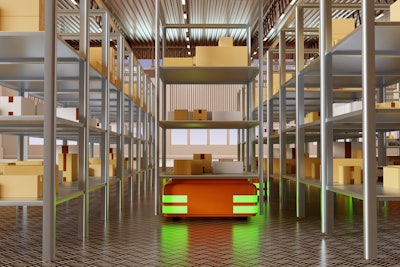
Automated storage and retrieval system (AS/RS) revenue within micro-fulfillment centers (MFCs) is expected to reach $1.2 billion by 2027, with uptake primarily seen in the grocery and fast-moving consumer goods (FMCG) industries, according to a recent ABI Research study.
“The need for high-density storage and fast fulfillment capabilities allows technologies to scale down and enable a flexible, bespoke frontline distribution network. In addition to automated high-density storage systems, retailers are also looking to enhance manual picking operations to deliver micro-fulfillment solutions using handheld devices and goods-to-person (G2P) mobile robots. With over two-thirds of MFCs currently deployed in or alongside existing stores, micro-fulfillment solutions are helping retailers re-imagine how they utilize their current infrastructure to support online delivery,” says Ryan Wiggin, supply chain management and logistics industry analyst at ABI Research.
From ABI Research:
- As demand for alternative shopping experiences like click-and-collect increases, customer attraction and retention rests heavily on effective inventory management and localized delivery capabilities. Most solutions are underpinned by cube or shuttle-based AS/RS, orchestrated by management systems increasingly incorporating artificial intelligence (AI) capabilities.
- Store and warehouse workers are being equipped with more sophisticated handheld devices to help optimize online order picking.
“Particularly in industries where online delivery has notoriously been an unprofitable venture, localized, automated MFCs are greatly helping to reduce both cost and picking time. U.S.-based industry giants are leading in MFC solutions adoption. Still, traction is being gained by MFC solutions vendors across Europe and Asia-Pacific, signaling wider implementation of automated micro-fulfillment. End users must assess current network requirements and understand where micro-fulfillment solutions could offer significant value. Technology vendors must ensure that solutions can be scaled and be adaptable to retailer’s requirements,” says Wiggin.





















